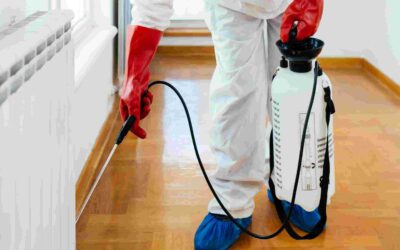
How to Prepare your Lawn for the Winter
Although winter is typically the time of year you spend the least amount of time on your lawn, there are still lawn care steps you can take to ensure that it grows back healthy and lush in the spring.
Fertilize Your Lawn in Winter
Late fall and early winter are the best times to fertilize your cool-season grasses. Because the majority of lawns in North America are made up of cool-season grasses like Bermuda and bluegrass, it’s usually a safe bet to assume that your lawn could benefit from late-season fertilization. If you’re not sure what type of grass is on your lawn, take a sample to a nearby nursery and they can help you identify it.
Before the first real freeze of the season, thoroughly fertilize your lawn to replace all the nutrients that are lost through growth and evaporation in the hot summer months. As the weather gets colder, the fertilizer will stay in the soil and feed the grass’s roots throughout the season. Then, when spring arrives at last, your lawn will spring up lush and green from a winter of being well fed!
Mow Your Grass Down Slowly to Avoid Shock and Keep It Healthy
To prep for cooler weather, you should be slowly cutting your grass lower and lower in the last month of summer (or early fall depending on how warm your climate is). Slowly cutting it down allows it to winter well without shocking it by cropping it close all at once.
It’s important to cut your lawn short for the winter season because long grass invites mice, moles, and other burrowing creatures who need a safe, warm place to live in the wintertime. It may sound picturesque, but as they dig, they’re destroying your lawn’s root systems, and come spring, you’ll have large dead patches that you have to spend time and money repairing.
Cutting your grass short also protects any new growth on your lawn that’s getting a little fragile at the end of the growing season.
Pickup Is Essential
It’s easy for items like overturned planters, dog toys, and stray branches to get left behind after your last mowing of the season. But before the first frost or snow comes, you’ll want to be sure to pick everything up off your lawn. Starting after your last mow and right up until the first snow, do a weekly sweep to make sure there’s nothing new or overlooked that could get buried.
Obviously, you don’t want your items to be frozen over or damaged, but more importantly, when heavy objects are left on your grass in freezing weather it can kill the grass underneath and leave unsightly brown spots that you have to treat with lawn care with come spring. Even if the grass isn’t killed completely, you may have areas that grow back thinner or more stunted, which leaves you open to pest and weed infestation and damage.
Avoid Too Much Foot-Traffic in Winter
Even though your lawn is pretty dry and brown in the winter, it’s important to remember that it’s not dead – it’s just dormant. And in this dormant state, your grass is actually very delicate and brittle. Grass is pretty resilient – we’re not saying you can’t walk across it at all in the winter months! But be mindful about accidentally creating “desire lines” or paths that stray repeatedly across certain parts of your yard as people walk to their cars or the front door.
To discourage wayward foot traffic, keep your sidewalks clear and consider laying out paving stones to clearly mark a safe passageway through the yard. And never allow someone to park or drive across the lawn! Even small vehicles can tear up the grass with the tires’ rotations and kill your grass, leaving it vulnerable to crabgrass and other weeds popping up and invading.
If you have questions about winter lawn care, contact West Termite Pest and Lawn! We’re here to help you develop a long-term yard maintenance plan that keeps your lawn lush, green, and healthy – no matter the season!
More posts from West Termite, Pest & Lawn
Spring Into Action: Preventing Termite Infestations in Arkansas Homes
Termite infestations are a serious concern for homeowners in Arkansas, especially during the spring when these pests become most active. Preventing termite infestations early can save you from expensive structural damage and long-term headaches. Termites thrive in the...
Early Spring Lawn Care Tips: How to Keep Your Arkansas Yard Healthy
A healthy lawn starts in early spring. If you want lush, green grass by summer, the groundwork begins as the weather warms and the soil softens. The right early spring lawn care routine is essential for homes in Arkansas, where fluctuating temperatures and humidity...
Mosquito Season is Coming: How to Protect Your Arkansas Home This Spring
Spring is here, and with it comes mosquito season. As temperatures rise and moisture increases, mosquitoes begin to thrive across Arkansas. If you are not prepared, these presets can quickly invade your yard and turn outdoor activities into a battle against bites. The...



